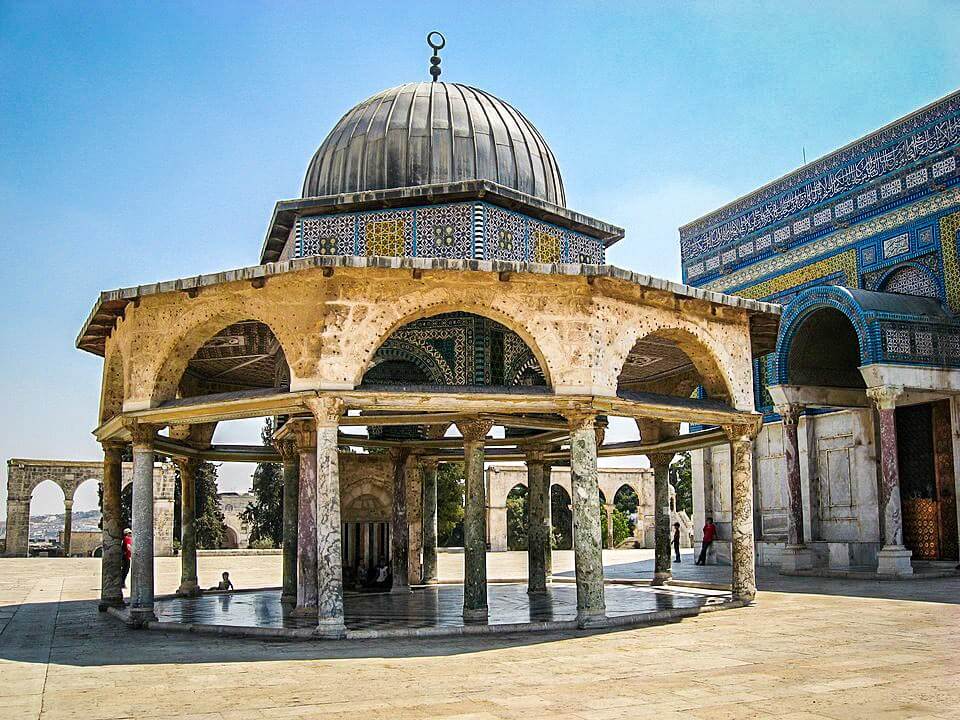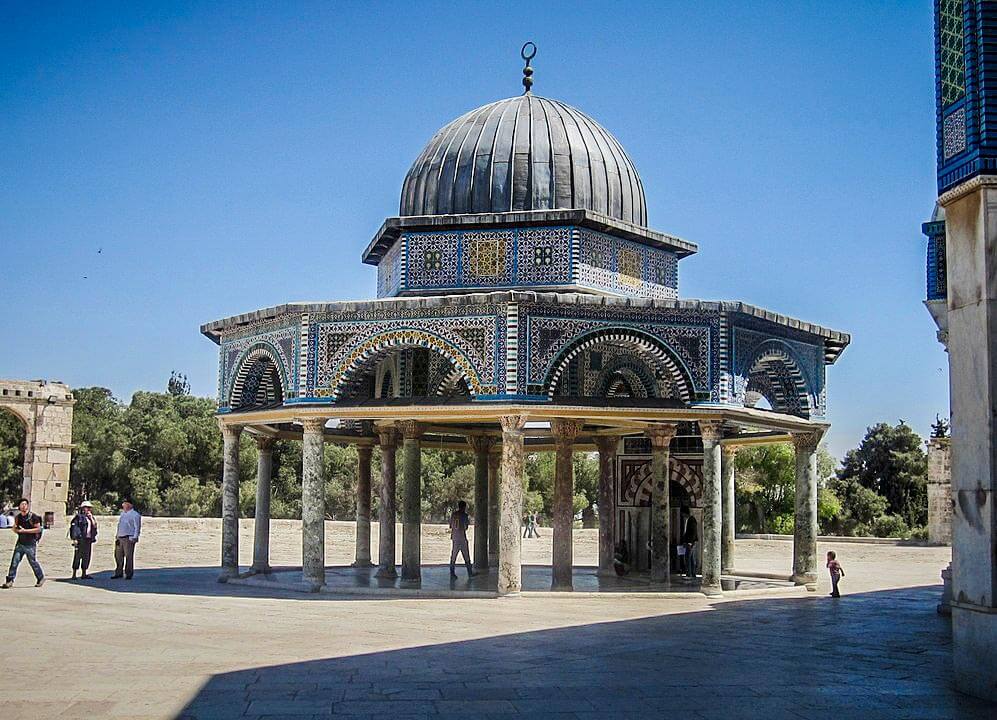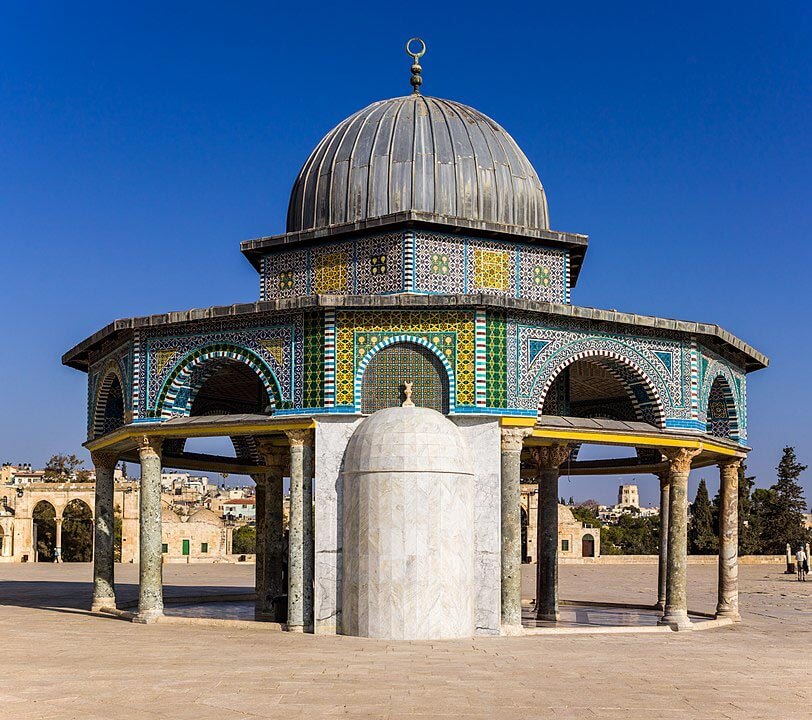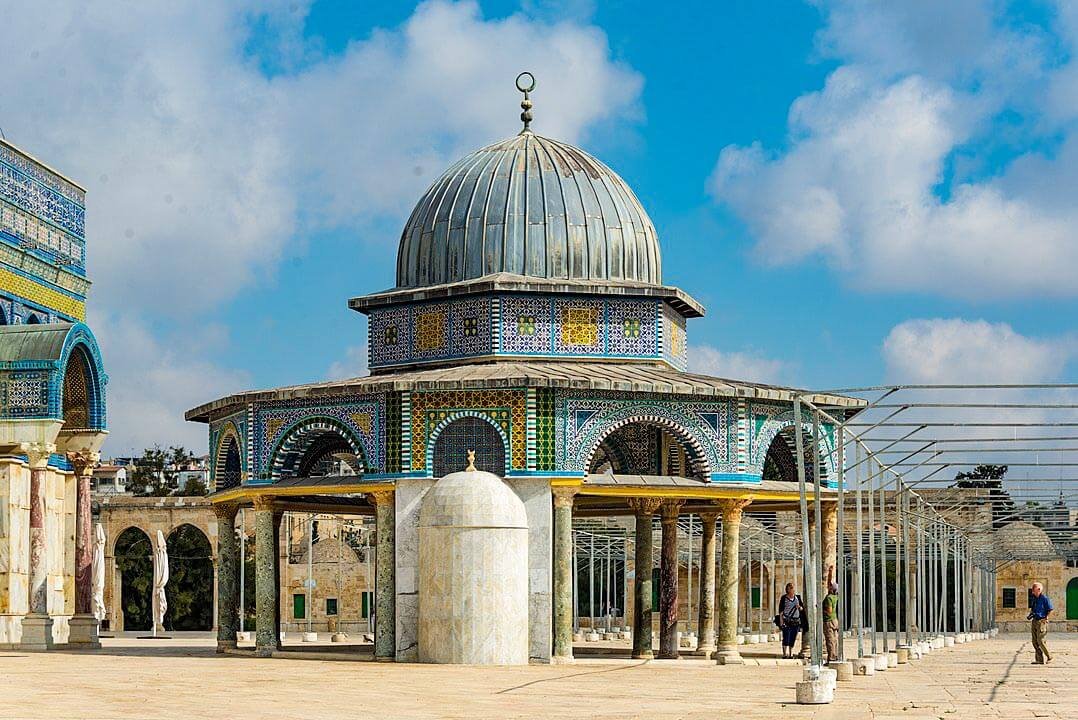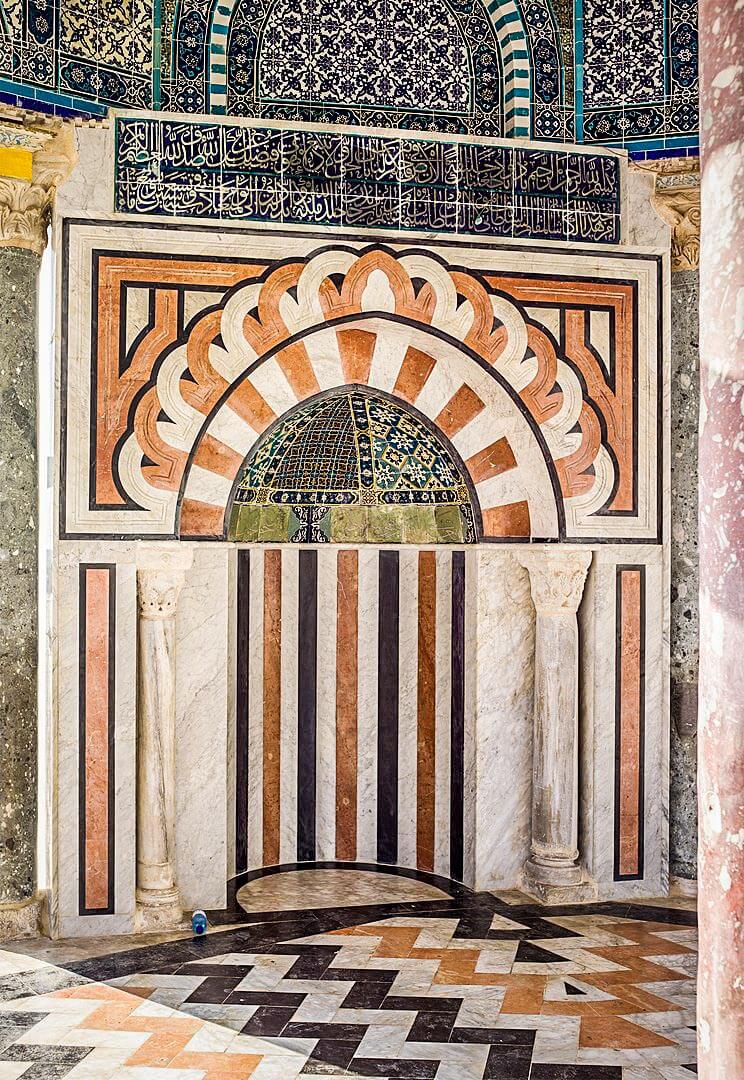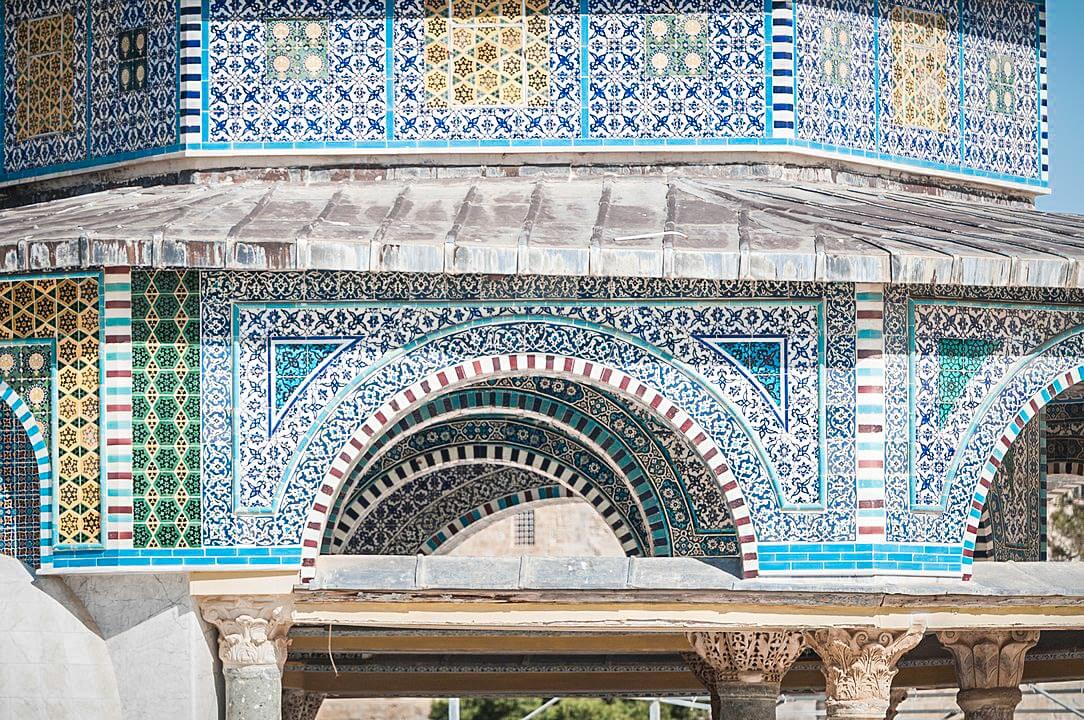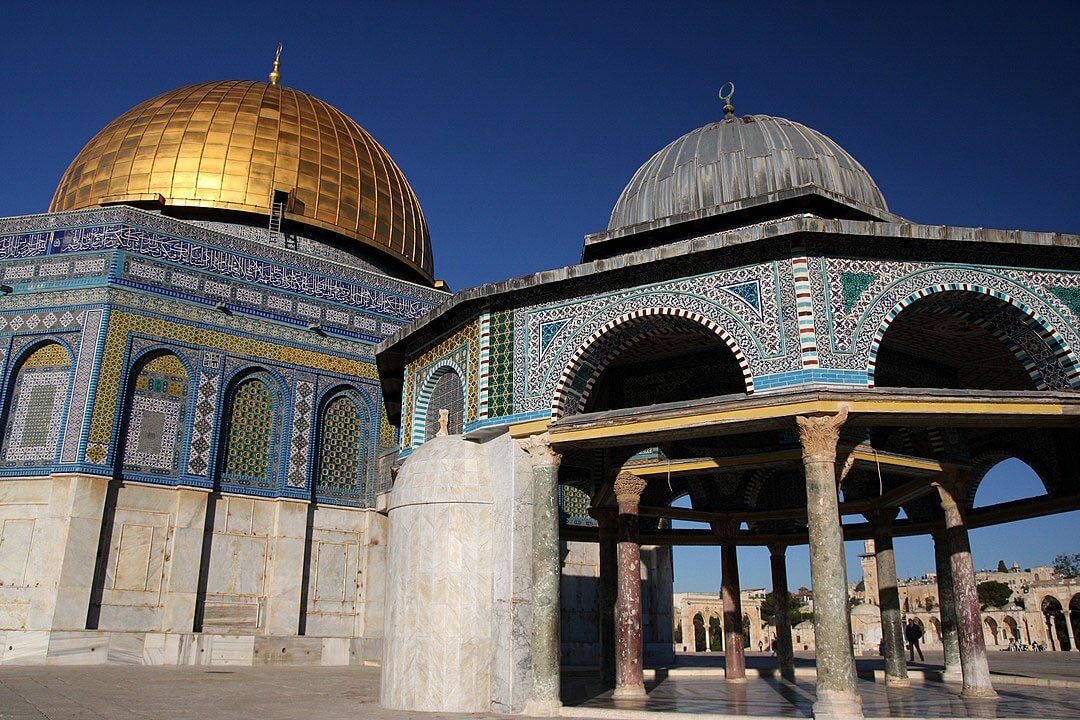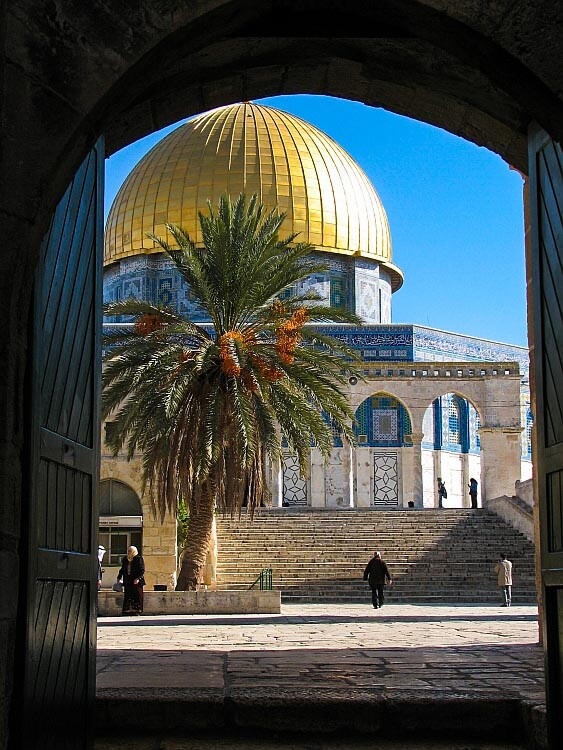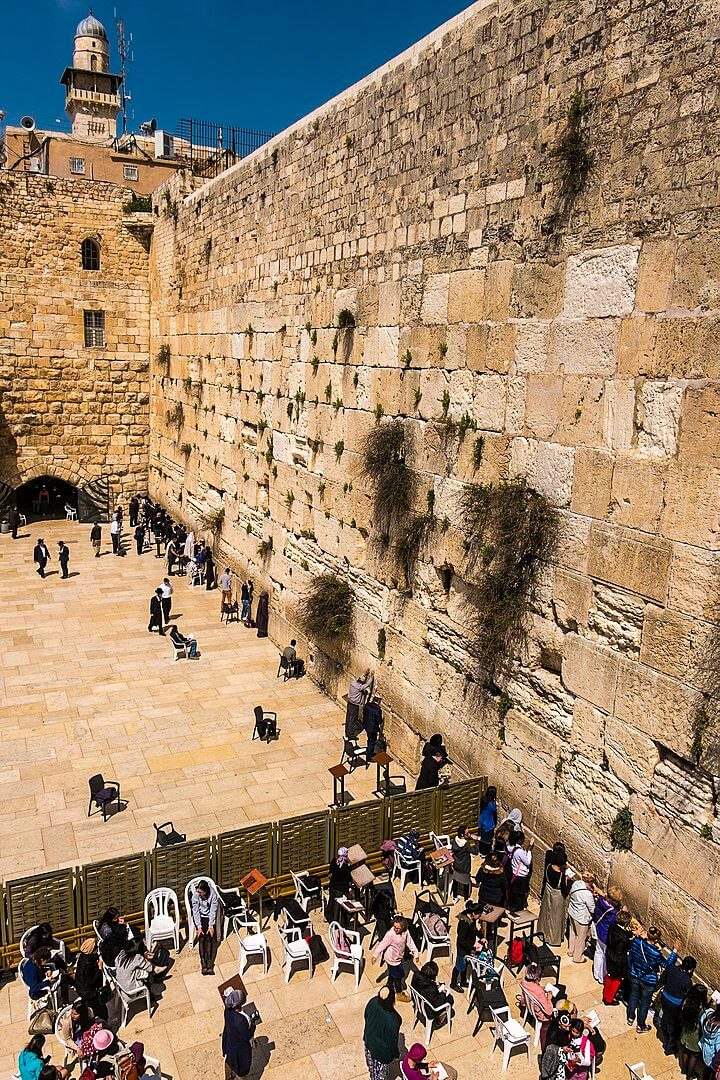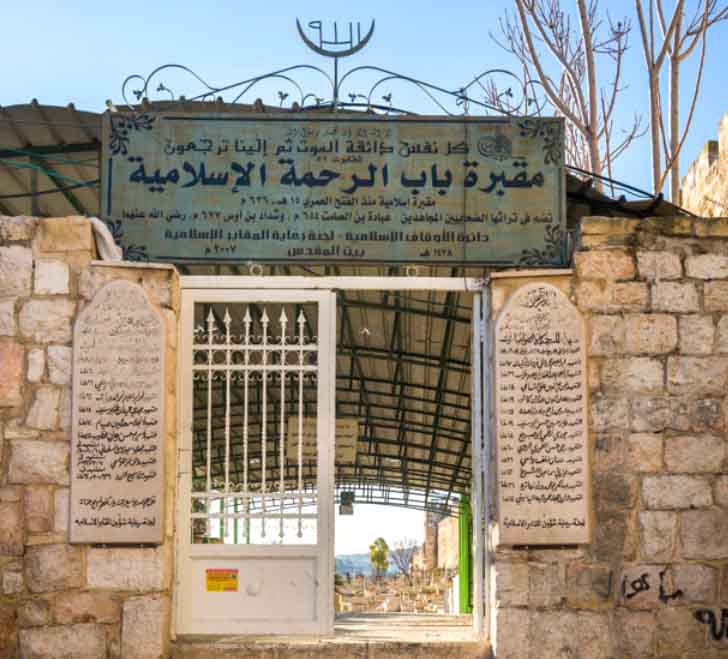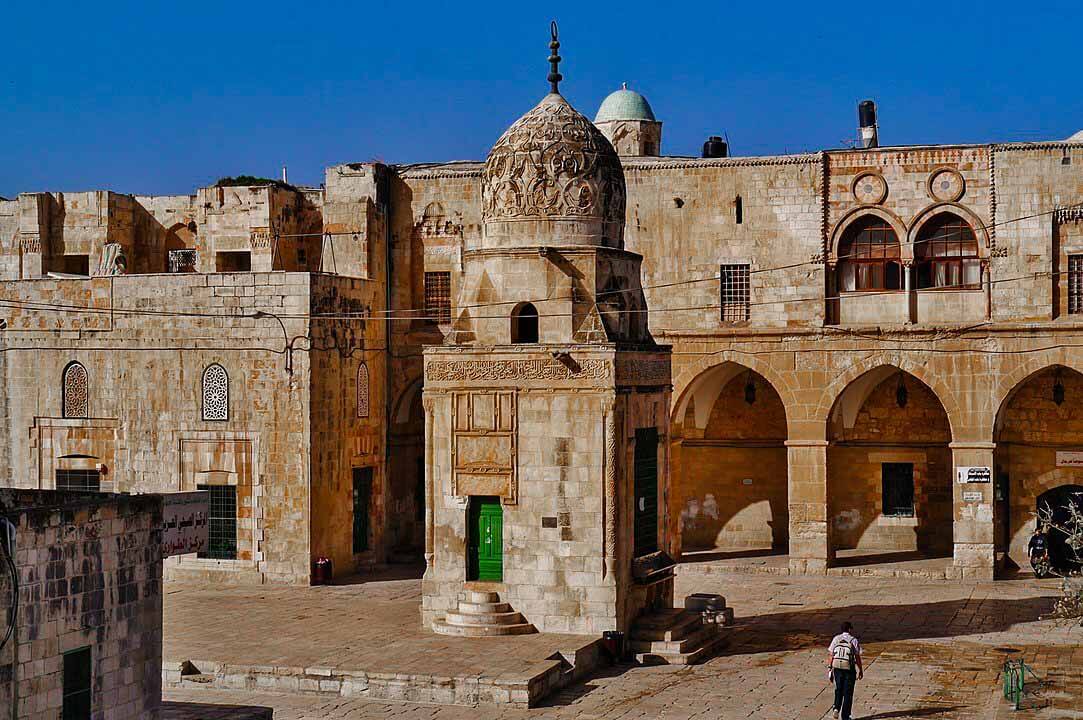Jerusalem, Palestine
Coordinates: 31.778056, 35.235817
Dome of the Chain is one of the oldest structures on the Haram ash-Sharif.
It is not a mosque or shrine, but is used as a prayer house. It was built by the Umayyads, became a Christian chapel under the Crusaders, was restored as an Islamic prayer house by the Ayyubids, and has been renovated by the Mamluks, Ottomans and the Jordanian-based waqf..
It is located to the east of the Dome of the Rock; although some people believe it was built as a prototype for the Dome of the Rock, yet it is smaller in size and different in shape.
It is one of the oldest structures in the Masjid al-Aqsa compound.
Purpose of building
Historians differ over the purpose the Dome of the Chain was constructed for.
Some say it was used as a national treasury, but this theory is quite unlikely because of the building’s open structure that would make keeping money safe inside of it a very difficult task.
Others suggest it was used as a lounge for architects and builders when they were building the Dome of the Rock itself.
Appearance
As for the Dome’s physical characteristics, it is an open building that has eleven sides which are based on eleven marble columns, while the dome is sitting on a hexagonal drum.
The faience that decorates the dome was brought to Al-Aqsa Mosque upon the Ottoman Sultan Suleiman the Magnificent’s orders in 969 AH/1561 AC.
During the Crusaders’ occupation of Jerusalem the Dome was turned into a church called Saint James.
It returned to Muslims’ position after Salahuddin Ayyubi’s رحمة الله عليه liberation of Jerusalem in 583 AH/1187 AC.
Religious significance
It is said that among the wonders of the Holy House is the chain, which Hz. Sulaiman عليه اسلام, son of Hz. Dawud عليه اسلام, suspended between Heaven and Earth, to the east of the Rock, where the Dome of the Chain now stands.
It is also said that the chain had one characteristic. If two men approached it to solve a point of litigation, only the honest and upright man could take hold of it; the unjust man saw it move out of his reach.
Also in some traditions, it is said that it’s spot is where Judgment Day will occur in the “end of days” and where a chain will stop the sinful and let the just pass through.
Notably, the mihrab in the al-Aqsa Mosque is located exactly in the middle of the qibla wall of the Haram ash-Sharif on north-south axis with the Dome of the Chain.
Conversion of the Dome
When the Crusaders invaded the Levant in 1099, they identified the dome as the spot where Saint James was martyred, and transformed the building into a chapel dedicated to him.
In 1187, the building was returned to Muslim use after Hz. Salahuddin رحمة الله عليه captured Jerusalem from the Crusaders. In 1199–1200, the ceiling and pavings were renewed by the ruling Ayyubids.
The structure was renovated by the Mamluk sultan Baybars (1260–1277). The latter’s renovations likely involved the refacing of the mihrab with marble.
In 1561, under the Ottoman sultan Suleiman the Magnificent, the tiles of the mihrab were glazed and later in 1760, more tile work was done.
The last major restoration undertaken at the Dome of the Chain was commissioned by the Islamic waqf of Jerusalem in 1975-76.


